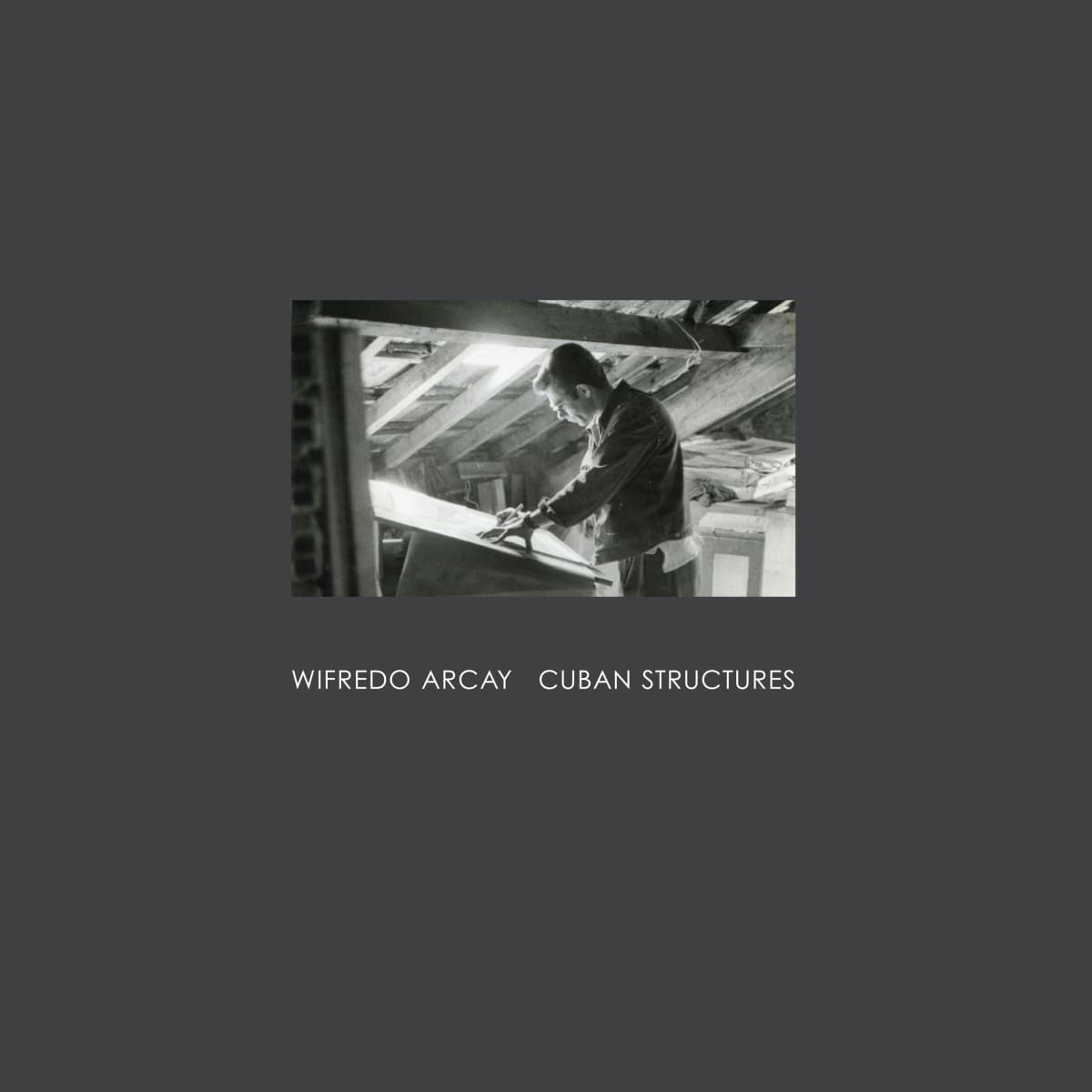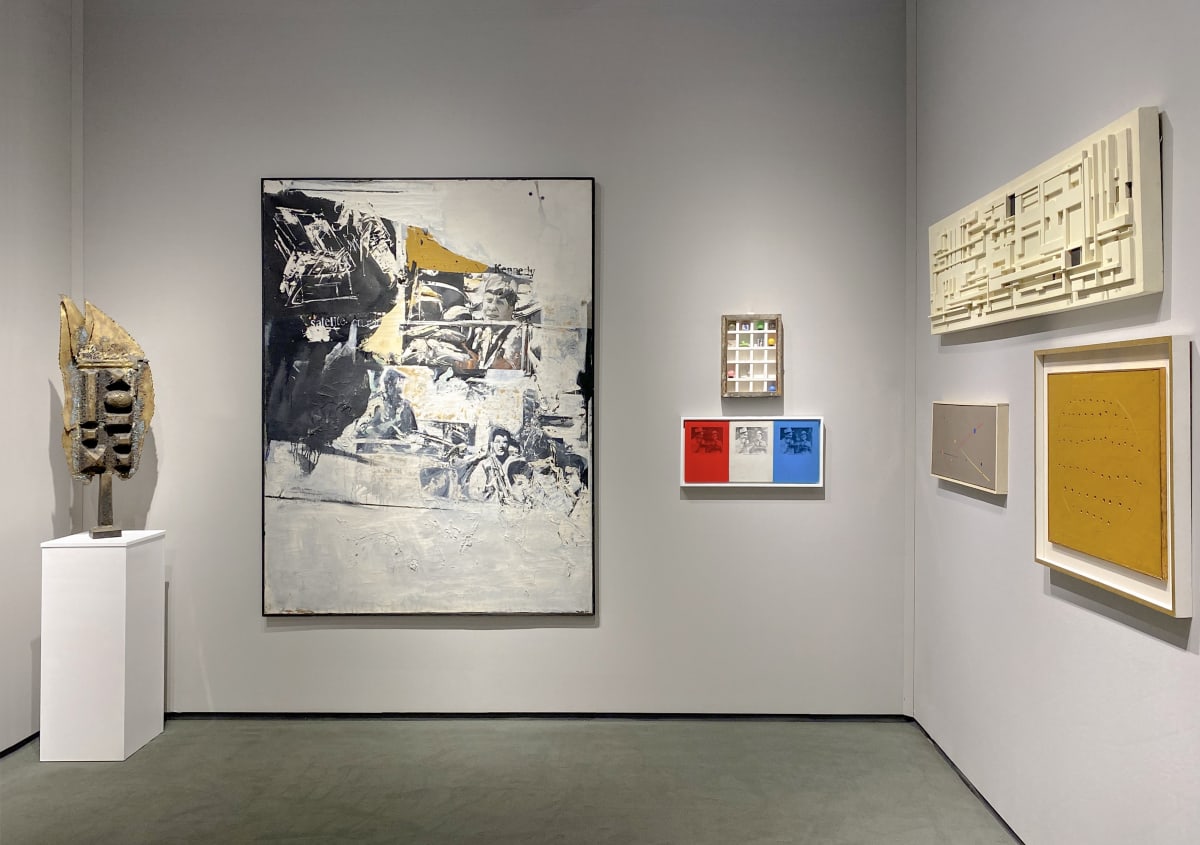Wifredo Arcay Cuban, 1925-1997
'The perfection of Cuba’s Cubists'
- Jean Arp
Arcay (b. 1925 Havana, Cuba - d. 1997 Paris, France) emerged among the postwar generation of the Ecole de Paris as a painter, muralist and as a printmaker. Born in Cuba and trained at Havana’s Academia de San Alejandro, Arcay arrived in Paris on a grant in 1949. He quickly assimilated within the milieu of post-Cubist abstraction, studying with Edgard Pillet and Jean Dewasne at their Atelier d’art abstrait. In 1951, at the invitation of André Bloc, the influential editor of the journal Art d’Aujourd’hui, Arcay set up a studio at Bloc’s villa in Meudon, mingling amongst such luminaries of the historical avant-garde as Jean Arp, Robert and Sonia Delaunay, and Fernand Léger.
While celebrated as a printmaker, Arcay painted only through the 1950s and 1960s, sending work to the Salon des Réalités Nouvelles (1951-54) and regularly to Cuba. He exhibited as part of the Cuban delegation to the São Paolo Biennale (1955) and frequently at Havana’s Galería Color-Luz, a pioneering outpost of geometric abstraction. A member of both the Constructivist Groupe Espace, founded by Bloc and Félix Del Marle in 1951, and the short-lived Cuban group Los Diez Pintores Concretos (1959-61), Arcay personified the rich diversity and internationalism of postwar abstraction.
The artist was recently included in the 2019 Reina Sofia exhibition in Madrid, Loved, Lost and Loose in Paris: Foreign Artists in Paris 1944-1968.
-
 Wifredo ArcayProposition III, 1962Oil on wood36.5 x 60 x 6 cm
Wifredo ArcayProposition III, 1962Oil on wood36.5 x 60 x 6 cm
14 3/8 x 23 5/8 x 2 3/8 inches -
 Wifredo ArcayUntitled, 1957Oil on wooden relief56.5 x 96.5 x 2.5 cm
Wifredo ArcayUntitled, 1957Oil on wooden relief56.5 x 96.5 x 2.5 cm
22 1/4 x 38 x 1 inches -
 Wifredo ArcayHorst-Egon Kalinowski, 1951Gouache on paper25 x 35.5 cm
Wifredo ArcayHorst-Egon Kalinowski, 1951Gouache on paper25 x 35.5 cm
9 7/8 x 14 inches -
 Wifredo ArcayMaquette 'Composicion Abstracta en Negro', 1950Gouache and ink on paper18 x 27 cm
Wifredo ArcayMaquette 'Composicion Abstracta en Negro', 1950Gouache and ink on paper18 x 27 cm
7 1/8 x 10 5/8 inches -
 Wifredo ArcayMaquette mural, 1950Gouache on card12 x 42.5 cm
Wifredo ArcayMaquette mural, 1950Gouache on card12 x 42.5 cm
4 3/4 x 16 3/4 inches -
 Wifredo ArcayUntitled, 1950Gouache on paper12.5 x 18 cm
Wifredo ArcayUntitled, 1950Gouache on paper12.5 x 18 cm
4 7/8 x 7 1/8 inches -
 Wifredo ArcayUntitled, 1950Gouache and ink on paper12 x 45 cm
Wifredo ArcayUntitled, 1950Gouache and ink on paper12 x 45 cm
4 3/4 x 17 3/4 inches -
 Wifredo ArcayUntitled, 1950Gouache on paper54.5 x 42 cm
Wifredo ArcayUntitled, 1950Gouache on paper54.5 x 42 cm
21 1/2 x 16 1/2 inches
-

Three Colours
12 Apr - 5 Jun 2021We are excited that The Mayor Gallery will be re-open to the public from the 12 April with our comprehensive exhibition Three Colours, Red-White-Blue . A wide range of artists...Read more -

Hope for Bluer Skies
Abstract Exhibition 5 Mar - 9 Apr 2021The Mayor Gallery wishes you a year of happiness and good health with three online Abstract exhibitions to come in the first three months of 2021. 'WHITE AS SNOW IN...Read more -

Red Celebrating Chinese New Year
Abstract Exhibition 5 Feb - 4 Mar 2021The Mayor Gallery wishes you a year of happiness and good health with three online Abstract exhibitions to come in the first three months of 2021. 'White as Snow in...Read more -

LATIN AMERICAN WORKS ON PAPER
9 Jan - 28 Feb 2018The Mayor Gallery presents a group show of seven Latin American artists who were either born there or moved to join in the exciting and revolutionary art movements happening in...Read more -

WIFREDO ARCAY
CUBAN STRUCTURES 12 Oct - 20 Nov 2015Acclaimed by Jean Arp as “the perfection of Cuba’s Cubists,” Wifredo Arcay (b.1925 Havana, Cuba - d.1997 Paris, France) emerged among the postwar generation of the Ecole de Paris as...Read more
















